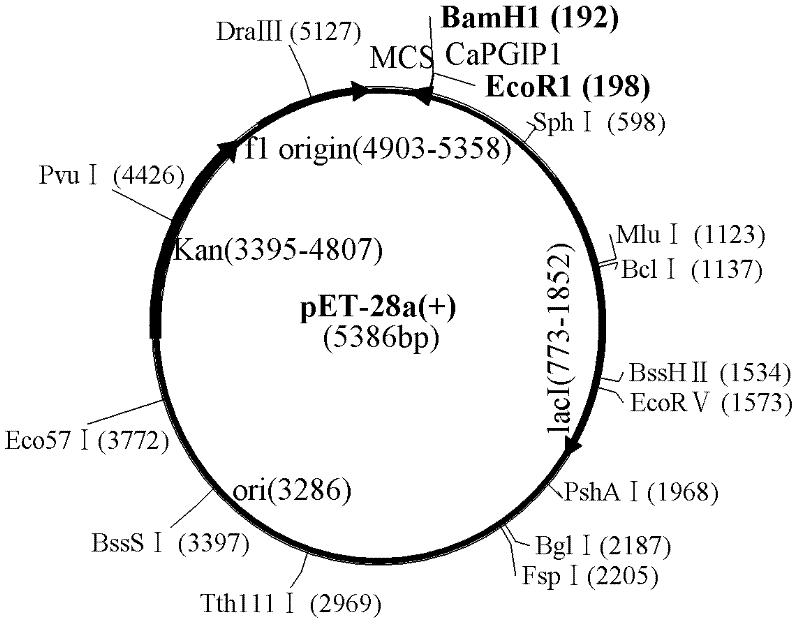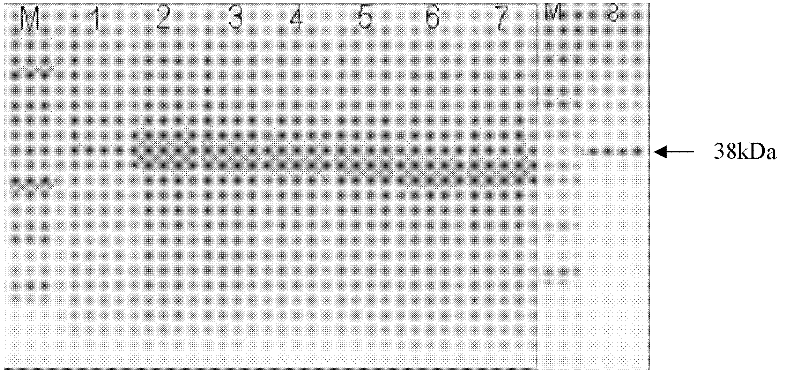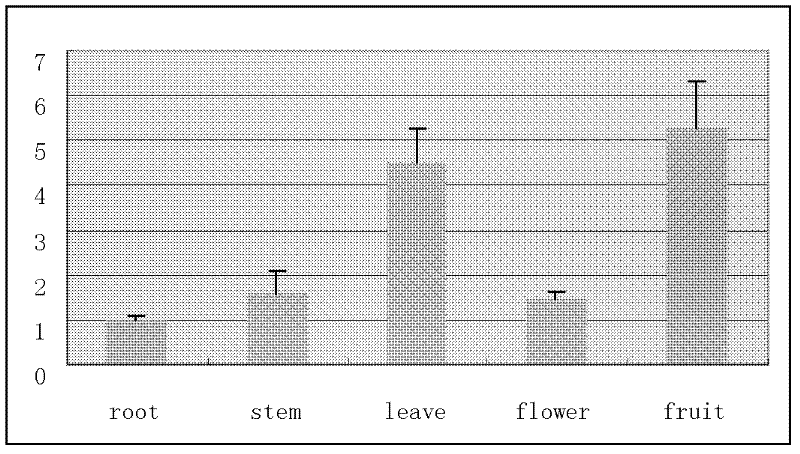Polygalacturonase arrestin gene CaPGIP1 and disease resistance technology thereof
A polygalactose and inhibitory protein technology, which is applied in the field of molecular biology to achieve the effects of improving disease resistance and inhibiting the infection of pathogens
- Summary
- Abstract
- Description
- Claims
- Application Information
AI Technical Summary
Problems solved by technology
Method used
Image
Examples
Embodiment 1
[0065] Example 1: Gene Cloning
[0066] Primers were designed according to the reported PGIP gene sequence, PGIP1-1 (its sequence is shown in Seq ID No: 3) and PGIP1-2 (its sequence is shown in Seq ID No: 4), with pepper genomic DNA as template, PCR Amplify the CaPGIP1 gene fragment, according to the principle of Tail-PCR, design specific primers J5-1 (its sequence is shown in Seq ID No: 5), J5-2 (its sequence is shown in Seq ID No: 6) according to the target gene , J5-3 (its sequence is shown in Seq ID No: 7) and universal primer AD4 (its sequence is shown in Seq ID No: 8) to obtain the 5' flanking sequence of the gene, and primer J3-1 (its sequence is shown in Seq ID No: 8) is designed ID No: 9), J 3-2 (its sequence is shown in Seq ID No: 10), J 3-3 (its sequence is shown in Seq ID No: 11) and universal primer AD2 (its sequence is shown in Seq ID No: 12) to obtain the 3' flanking sequence of the gene, and then design full-length primers PGIP1SP (its sequence is shown in Seq...
Embodiment 2
[0101] Example 2: Analysis of CaPGIP1 Gene Expression Differences
[0102] 1. Sample preparation
[0103] Take different tissues and organs (roots, stems, leaves, flowers, fruits) of peppers and store them at -80°C for later use; treat peppers at the 4-6 leaf stage with stress factors (salicylic acid, methyl jasmonate, abscisic acid, trauma, freezing) Leaves were sampled after 0, 1, 2, 6, 12, 18, 24, 36, and 48 hours, and stored at -80°C for later use.
[0104] 2. Capsicum RNA extraction
[0105] Total RNA was extracted according to the RNA extraction kit (purchased from Tiangen Biochemical Technology Co., Ltd.)
[0106] (1) Homogenization treatment:
[0107] Grind 50-100 mg of capsicum plant leaves into powder with liquid nitrogen, add 450 μl RL (check whether β-mercaptoethanol has been added before use), and vortex vigorously to mix.
[0108] Note 1: Water bath at 56°C for 1-3 minutes is helpful for plant tissue lysis.
[0109] Note 2: Due to the rich plant diversity, a...
Embodiment 3
[0151] Example 3: Gene prokaryotic expression and protein purification
[0152] 1. Prokaryotic expression of CaPGIP1 gene
[0153] The expression vector pET28a(+) plasmid was extracted for use, and the CaPGIP1 gene amplified by PCR was purified and recovered by agarose gel electrophoresis before use.
[0154] Carry out double digestion of the gene and vector plasmid, the enzyme digestion system is: CaPGIP1 gene / pET28a plasmid 10-20g, 10×Buffer 10μL, BamHI 4μL, EcoRI 4μL, add ddH2O to 40ul
[0155] After mixing, they were digested in a water bath at 37°C for more than 4 hours, and then purified and recovered by agarose gel electrophoresis, ready for use.
[0156] Ligation transformation of gene and vector: 1-3 μL of pET-28a(+) after digestion, 5-7 μL of CaPGIP1 gene after digestion, 1ul of Solution I, 10ul in total.
[0157] After mixing, they were reacted in a water bath at 16°C for 4 hours and then connected.
[0158] Connection steps:
[0159] Take 10 μL of the ligation ...
PUM
| Property | Measurement | Unit |
|---|---|---|
| molecular weight | aaaaa | aaaaa |
| molecular weight | aaaaa | aaaaa |
Abstract
Description
Claims
Application Information
 Login to View More
Login to View More - R&D
- Intellectual Property
- Life Sciences
- Materials
- Tech Scout
- Unparalleled Data Quality
- Higher Quality Content
- 60% Fewer Hallucinations
Browse by: Latest US Patents, China's latest patents, Technical Efficacy Thesaurus, Application Domain, Technology Topic, Popular Technical Reports.
© 2025 PatSnap. All rights reserved.Legal|Privacy policy|Modern Slavery Act Transparency Statement|Sitemap|About US| Contact US: help@patsnap.com



